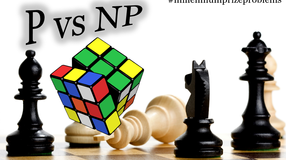HSC1004 - Psychological and Sociological Perspectives for Healthcare - Classical Theories
- YouWei
- Sep 8, 2017
- 3 min read

There are 8 parts to this module, and the first 4 covers the sociological aspect, while the remaining 4 covers the psychological aspect. As such, I would leave out the part of the title that is not discussed, starting from the next post on this module.
Several classical theories were introduced to us in this module.
The Biomedical Model is a dominant model in medicine by the 20th century. There are 3 main aspects of the Biomedical Model:
- Mind Body Dualism
- Assumption that the body begins as "disease free"
- A mechanical view of the body as a machine made up of interrelated parts
The mind-body-dualism part is a secular view on illness. Before the advent of science, illnesses were attributed to supernatural causes, the quasi-religious belief that one was sick because of sin and evil spirits. The assumption of mind-body dualism underpinned the biomedical model, whereby disease was seen as located in the physical body, and thus, the mind, or mental state of a person, was considered unimportant.
This allows medical professionals to make accurate and consistent diagnoses, and draw straightforward conclusions, subsequently providing a reliable treatment plan for any condition.
The Biomedical model is the cultural foundation of modern Western medicine, with heavy emphasis on developing chemical solutions for illnesses. However, it is worth acknowledging that illness can arise from a multitude of other factors, namely lifestyle, level of stress, economic situation, environmental factors and social or cultural practices.
For example, according to Germov's 2016 article, there was lower incidence of lung disease among British miners who worked in well-ventilated mines compared to poorly ventilated ones.
It is worth noting that not all healthcare professionals adopt the Biomedical model. The model is largely criticised for the following points:
- Being too Reductionistic
- Objectifying and Disempowering the Patient
A classic example is to look at the treatment plan for a mallet finger, which is caused by any blunt force on the distal interphalangeal joint. The standard treatment is to wear a mallet splint for 6 to 8 weeks to ensure that the condition is not aggravated. Thereafter, upon regaining the ability to straighten the finger, the patient is to perform regular hand exercises lasting around 10 minutes each session, performed hourly.
Taking a biomedical approach, the injured finger has 'malfunctioned', and it is the job of the healthcare professional to fix it. However, if for whatever reason the patient is not compliant with the prescribed hand exercises, it may seem like the patient is intentionally hindering recovery, but in actuality it may be too inconvenient to perform the exercises at such a high frequency.
The term "Sociology" is vaguely defined. It is largely referred to as the study of the social, a critical way of looking at society and the way people interact with each other or by themselves.
Many have also added the lines of "beyond common sense", and "defamiliarising the familiar" to describe sociology .
The general scope of sociology is divided into micro-sociology and macro-sociology. While mirco looks at small scale interactions among individuals and groups, like a particular caregivers' coping strategies of their group of patients, macro examines large scale processes and structures, like health systems, immigration patterns and how they affect the labour crunch in hospitals, and such.
The 4 main ways of applying the Sociological Imagination are:
- Historical - How the past affects the present
- Cultural - How culture influences norms
- Structural - How institutions affect us
- Critical - How we can improve our social environment
Here we have a few of the classical theories that were introduced to us:
Functionalist Theory assumes that there is a social consensus within members of the society as to what is beneficial as a whole, and members will cooperate to achieve it. It sees society as a complex system whose parts work together and interconnect to promote solidarity and stability.
Conflict Theory sees society as an arena of differences and inequalities that generate conflict and change. While functionalism emphasises on solidarity, conflict theory emphasises on division. It does not agree that society is in the consensus. Rather than promoting harmonious functions of society, social structures are seen as ways of controlling individuals to the benefit of others.
Social Action seeks to understand society from a personal, micro level. Although it tries to explain behaviour for individuals / groups, it does not attempt to explain "society in general". A micro-level viewpoint is essential for understanding a setting from the perspective of the people in it. The interactions of an individual with others tells us about the individual's identity, beliefs, value, culture and norms.
Next week in Sociology we will be covering Social Constructionism. Stay tuned for more Messy Workings! :)
Thanks for reading!














Comments